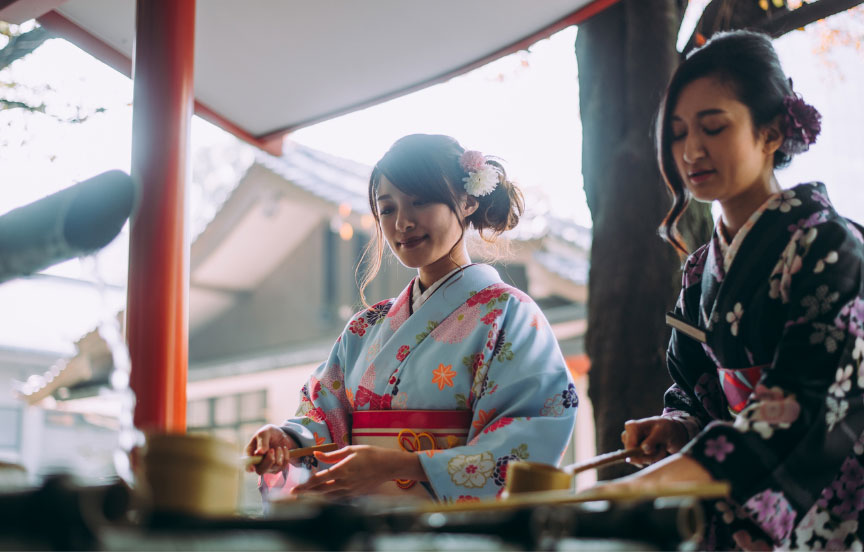How to eat in Japan the right way
For you, foreigner, who is going to stay in Japan, this country very proud of its customs and famous for its strict politeness, and who will be invited to a traditional meal, read this article until the end and learn the basic rules of Japanese etiquette in order not to look like a lout.

The table and the cutlery
The table is low, surrounded by cushions and floor chairs (“zabuton” or “zaisu”). Food is served on trays placed in the middle of the table. The tableware is simple and elegant. It consists of bowls, plates (round, rectangular, square) and dishes made of various materials such as wood, porcelain, ceramics… In Japanese culture, the visual is as important as the taste. At the end of the meal, guests, as a sign of politeness, put back the dishes exactly as they were at the beginning.
The meal itself
The traditional meal is composed of a soup and three dishes (“Ichiju sansai”) so a bowl of rice with miso soup and 3 side dishes. The latter can be fish, meat, eggs, tofu, mushrooms, various seasonal vegetables… There are the 5 main flavors: salty, sweet, sour, bitter and umami, as well as varieties in the colors of food and cooking methods.
All the dishes are served at the same time and we attack first the most delicate ones to finish with the most spicy ones. Everyone helps themselves to the dish, but be careful with the opposite side of their chopsticks for hygiene reasons. White rice is eaten plain, no sauce is added. Noodles and soups, against all expectations, must be sucked noisily, as a mark of appreciation of the dishes.
The rules of politeness
Before starting to eat, you should always thank the hosts by saying “Itadakimasu” and join both hands if you wish. Before toasting, we say “kanpai”; be careful not to say “tchin tchin” which means genitals in Japanese! “Oishi” means delicious and marks your appreciation. At the end of the meal, you can say “gochisosana deshita” as a thank you. Cleanliness is a must during the meal: hands before serving, mouth so as not to dirty the glass. Chopsticks should not be stuck in the food and should not be pointed at other diners. You can use the usual cutlery if you are served western food. You must eat hot to respect the cook and you must finish everything on your plate. Blowing your nose, burping, talking about matters that may spoil your appetite, and putting your elbows on the table are not allowed. You must wait until you are offered a drink, and serve the other guests afterwards, and until everyone is served before you start drinking.
